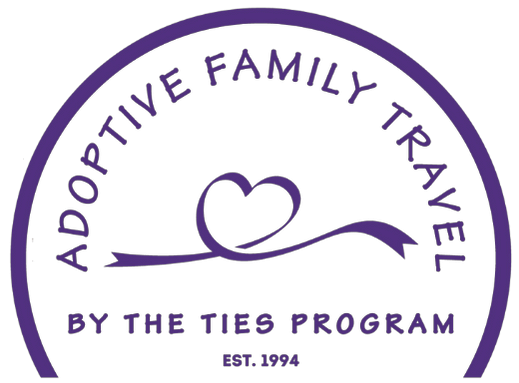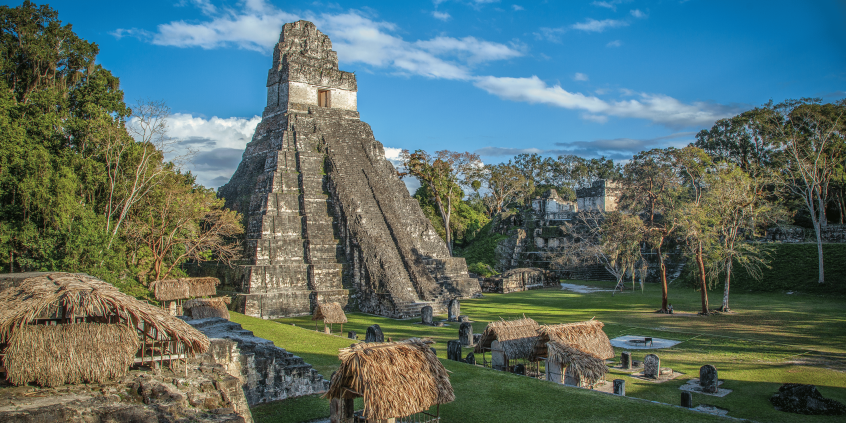When Ties Adoptive Family Travel started 30 years ago nearly all adoptees traveled with their adoptive parents for heritage journeys. Over the last decade, as many transnational adoptees have reached adulthood, a shift has occurred in the types of groups supporting them. These groups, now referred to by Ties as “loved ones,” offer a range of support tailored to adoptees’ needs. Many adoptees of all age ranges travel with adoptive parents, but they also travel with loved ones that are important to them. Some of the groups we see nearly every year on our group heritage journeys include:
- Adoptee + significant other + adoptive parents
- Adoptee + parents + aunts/uncles and cousins
- Adoptee + grandparents + adoptive parents
- Adoptee + adoptee
- Adoptee + divorced parents + significant others (additional parental figures)
- Adoptee + siblings (sometimes biological siblings, sometimes not)
- Adoptee + their children
- Adoptee + significant other

Today, the loved ones traveling with adoptees are as diverse as the adoptee experience itself. As adoptees prepare for their heritage journey, it’s important for them to thoughtfully consider who among their loved ones is best positioned to support them on this meaningful trip. Here’s some questions to ask as you prepare:
How centered do I want my adoption story to be?
There are so many ways for an adoptee to experience their country of birth. Generally adoptees choose either group or solo experiences. For purposes of brevity, let’s focus on group travel. If you are considering traveling privately or independently, reach out to our team to discuss why you feel like this is the best fit for you. We’re happy to discuss options with you.
Group experiences often fit into three main categories:
- Non-adoptee specific group travel: Some adoptees may prefer that their adoptee experience and identity not be the primary focus of their journey back to their country of birth. For other adoptees, this is a wonderful choice. However, we’ve found that most adoptees, including a number of our current staff members who traveled this way, often end up regretting the decision to make their first trip under these circumstances. Adoptees may end up feeling isolated and lonely because the feelings, emotions, and the questions they encounter aren’t typical tourist questions, making it challenging to fully process their unique experiences.
- Motherland Trips: Motherland trips for adoptees, most common in South Korea, are adoptee-only group trips that focus on the shared adoptee experience. We’re big fans of adoptees traveling together, as it’s the center of our work and can provide a significant identity-building experience. However, one challenge with motherland trips is that they often exclude an adoptee’s existing support system from the journey. The trip is something separate from their lives, rather than being something that is incorporated into their life, with their built- in support system around them. This can make the transition back home and the subsequent culture shock that follows more challenging.
- Heritage Journeys: We’re big fans of heritage journeys, having facilitated them for over 30 years, because they center the adoptee and their experiences while surrounding them with a circle of support. This support system includes loved ones, adoption experts, and in-country specialists. In our experience this circle of support best allows adoptees to delve into both their personal adoption story and a country’s adoption history to the level they are comfortable with. Some on heritage journeys want to dive deeply, and others don’t. The make-up of a group on a heritage journey (adoptees and their loved ones) allows for flexibility for each individual to engage with their heritage as much or as little as they wish.
Once you’ve chosen a heritage journey as the right path for you, the next step is to consider who you want by your side to support you on this transformative experience. Here are five questions to help you decide:
Who has seen you through transitions in your life?
Chances are if you made it this far, you’ve been through some challenges and some transitions in your life. The people who have been there for you are the people you want to have on this journey, too. Who showed up for you during tough times and major life transitions? Who went to your plays, sports games, or graduations? Who did you call last week when you had a hard day at work (and did they listen/were they supportive)? Who do you rely on when you need emotional support? And who will pick up the phone when you are home from the heritage journey and you are struggling with reverse culture shock? Or are you (further) processing that visit with your birth family? Make a list of those people (there may only be a few, and that’s perfectly normal) and use this list as your starting point when deciding who should join you on this journey.
So now that you know who’s been there for you, take this list and ask yourself…
Who do you know that appropriately centers the adoptee experience for you?
We can break this into three parts.
- Adoptees have different relationships with their adoption. Some enjoy discussing their adoption story often, while others feel that it isn’t a prevalent part of their everyday life. Some experience their unique adoptee identity in almost every aspect of each day. All of these perspectives are valid, and adoptee needs and experiences also change over time. So, who in your support network makes you and your adoptee experience feel “comfortable” today? Who listens to where you are and meets you there? That’s probably a good person you want to bring along.
- Next, consider who always, or almost always, sees you as the expert in your adoption story and country of birth? You know your story best because it’s yours. Surround yourself with people who respect and acknowledge your authority over your own journey.
- Finally, ask yourself who do you think is going to put you and your needs first while on a heritage journey? Are they committed to focusing on what you want to do and see, or are they interested in exploring your country of birth for their own reasons? While it’s great that they have interests in aspects of your birth culture, they need to be able to put all or some of those aside to appropriately support you because above all else, this is your experience as an adoptee.

Who within your adoption or family network can support you on this journey?
Sometimes, it’s not just about who can provide support, but who has been a part of your adoption and family story that you want to go through this experience with? This might be an adoptive parent, as it can be a bonding and full circle experience for adoptees to travel back to their country of birth with their adoptive parents. Alternatively, it could be siblings who were there at the time of your adoption. Or a grandparent who played a key role in your upbringing.
Who can afford the trip?
International travel can be costly, and a heritage journey with a full circle of support may not be the most budget-friendly option, but in our experience, it is often the most ideal and enriching experience. Sometimes, the people we want to travel with may not be able to afford it. Parents and grandparents may have more disposable income than younger friends and could be open to assisting with the costs of other loved ones, such as spouses, siblings, or friends.
Who do you like to travel with?
International travel of any kind is a challenge. You might find yourself in unfamiliar environments, facing language barriers, and adjusting to different foods and customs. These factors can sometimes lead to frustration or “hanger”. Consider who among your loved ones can weather these challenges with you and whose travel style aligns with yours. For instance, you may prefer early mornings and a day full of exploration followed by a quiet evening, while your friends may enjoy late-night outings. Think about who you enjoy traveling with most and who can navigate the inevitable hiccups of travel with humor and grace. A good travel partner is someone who can roll with the punches, share in the laughter, and offer support during stressful moments.
If you’re still unsure about who would be the best travel companion, don’t hesitate to reach out to our team of experts. We’re happy to talk you through it.






